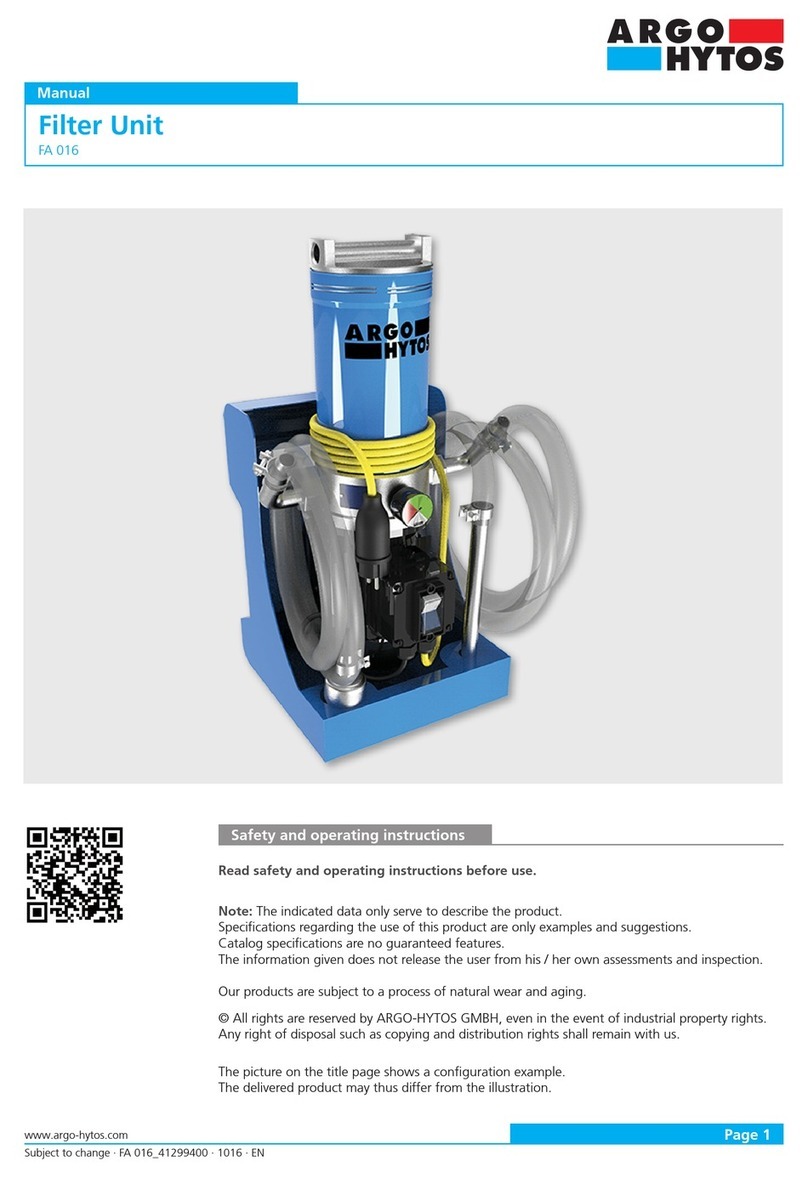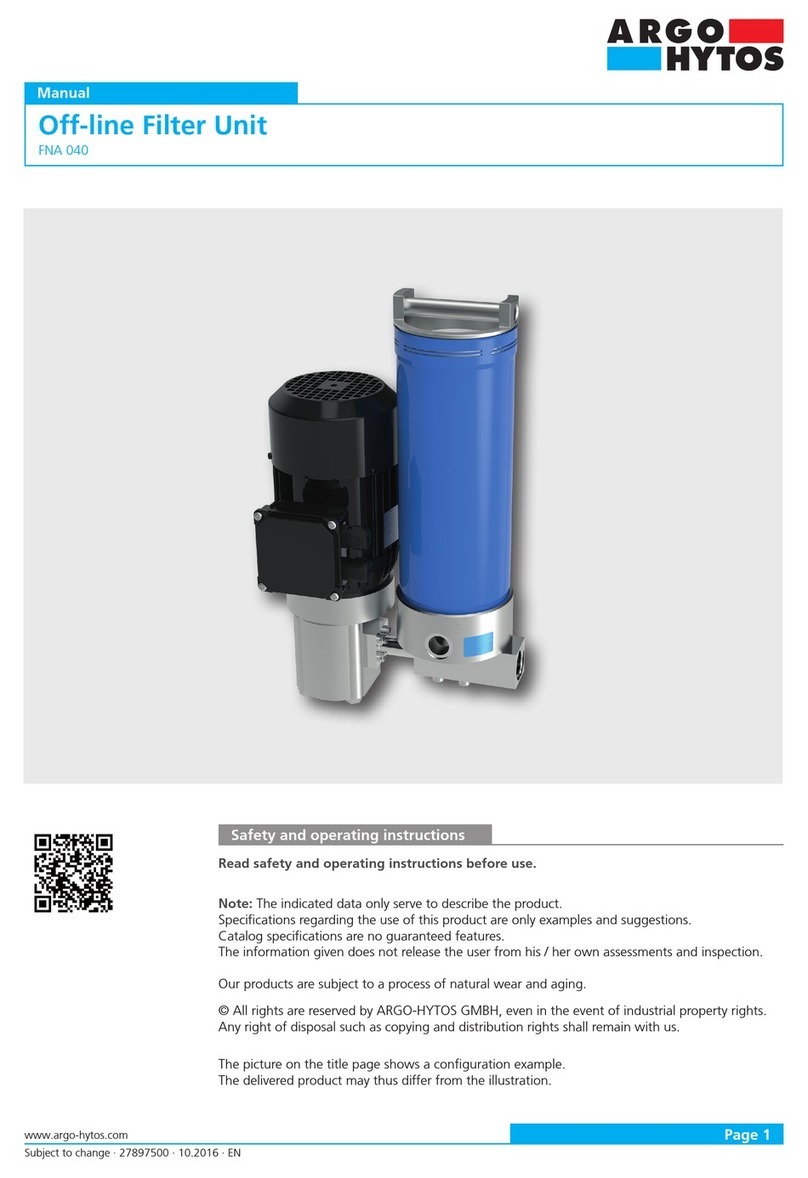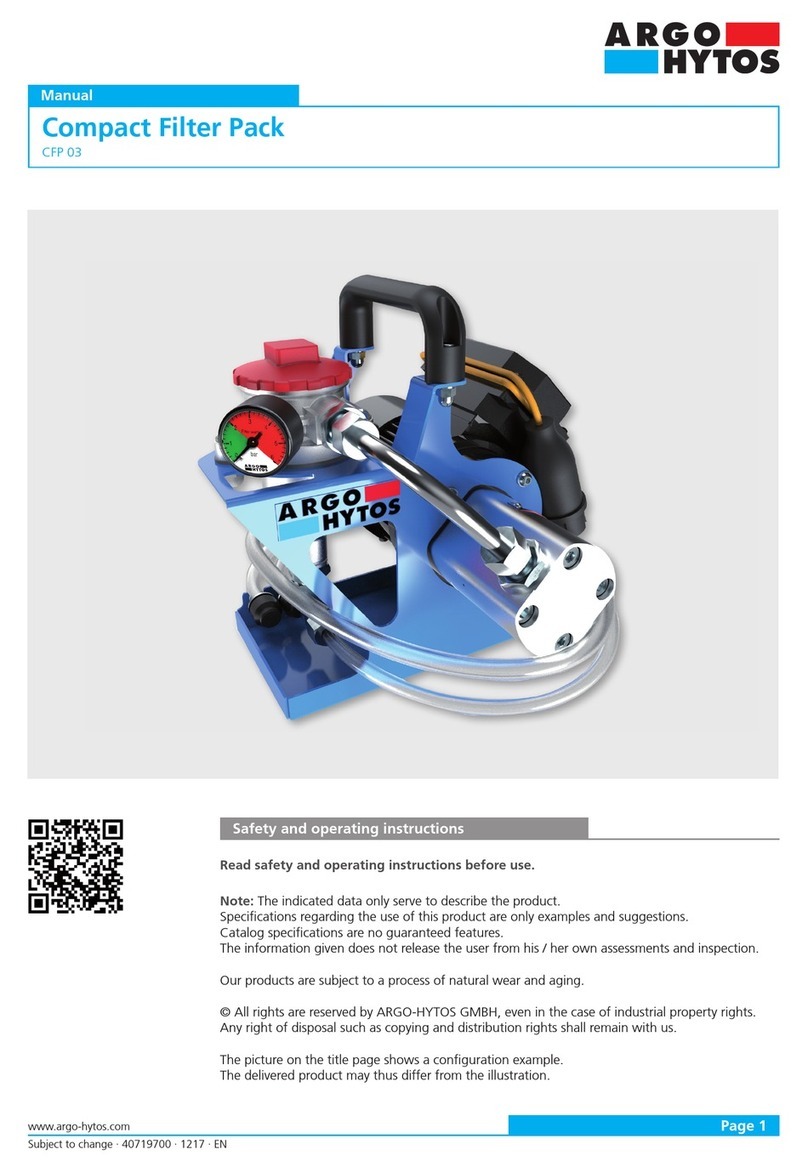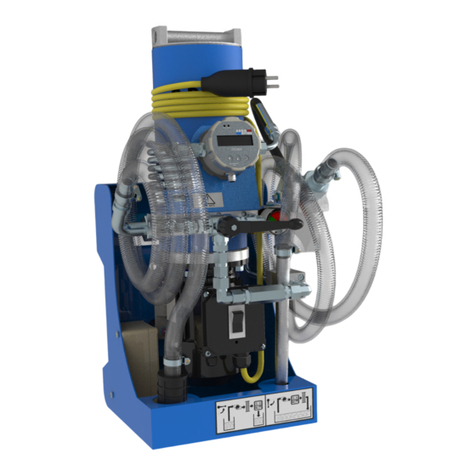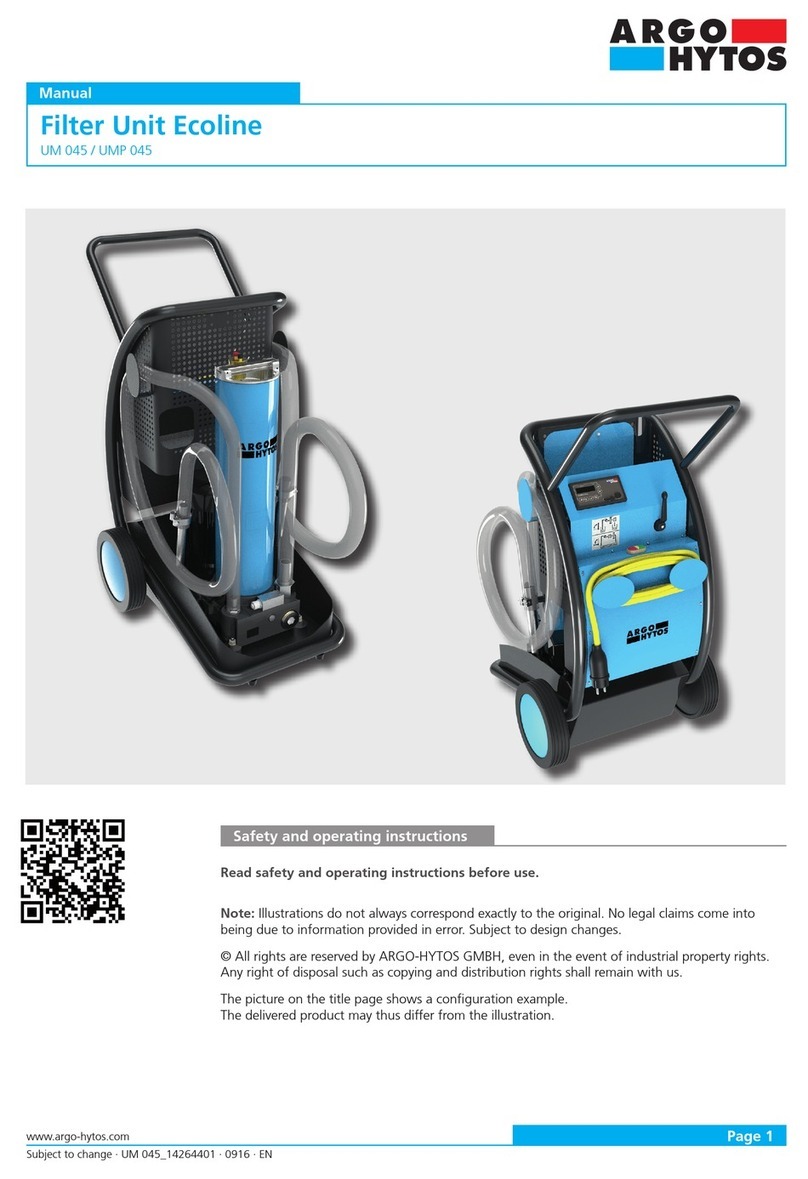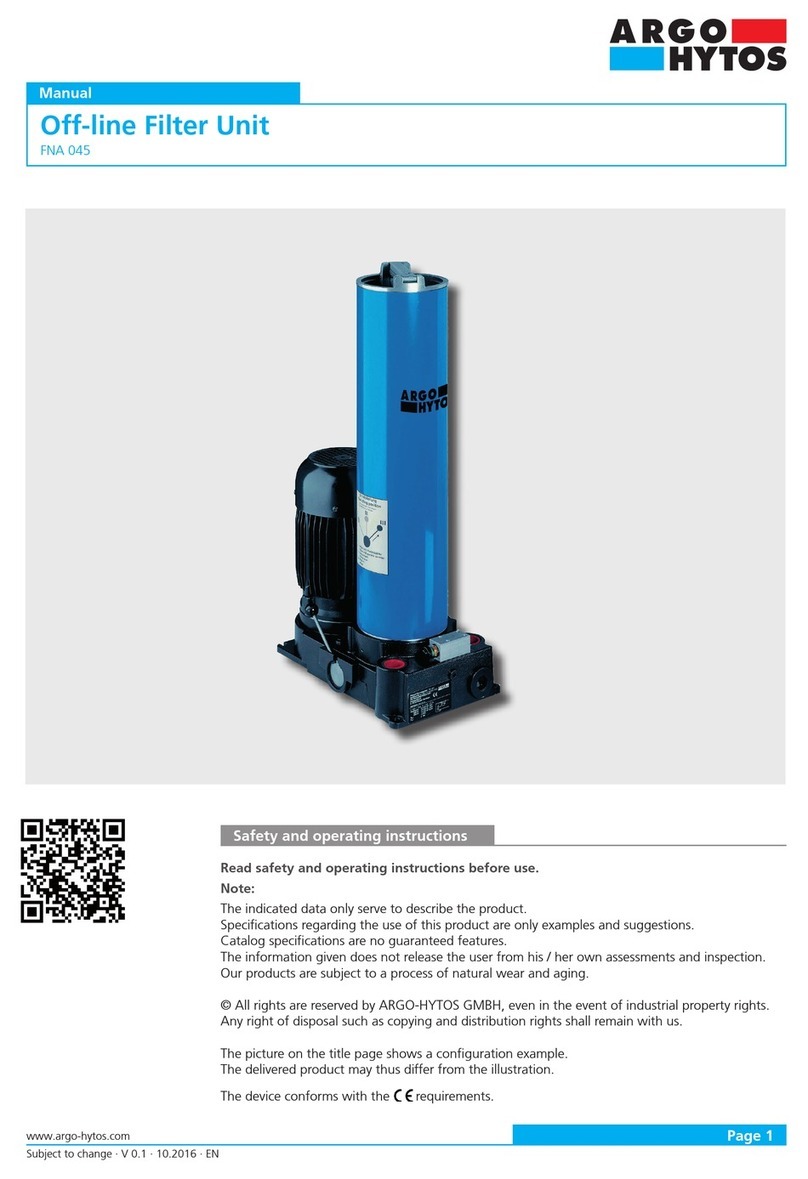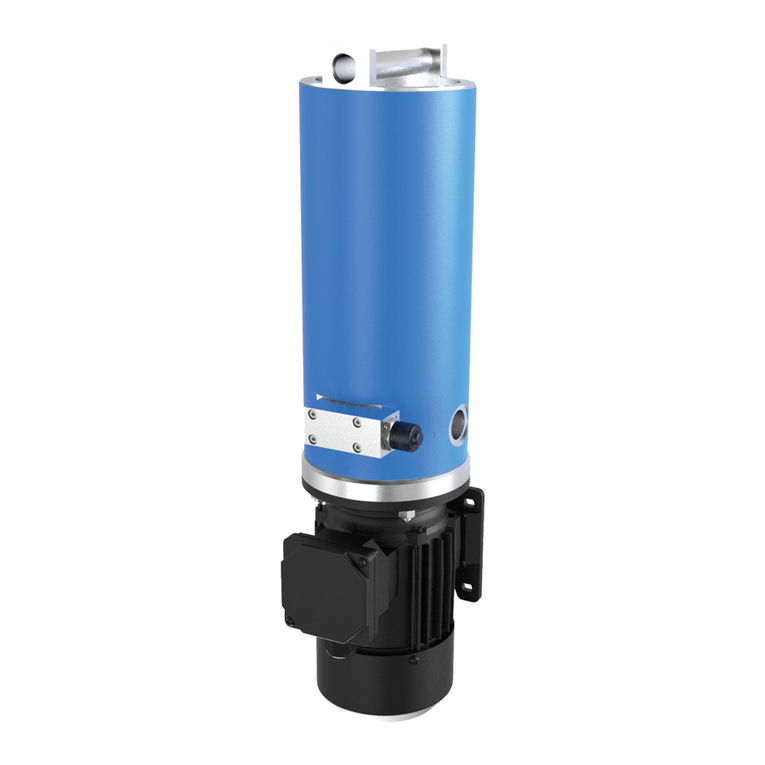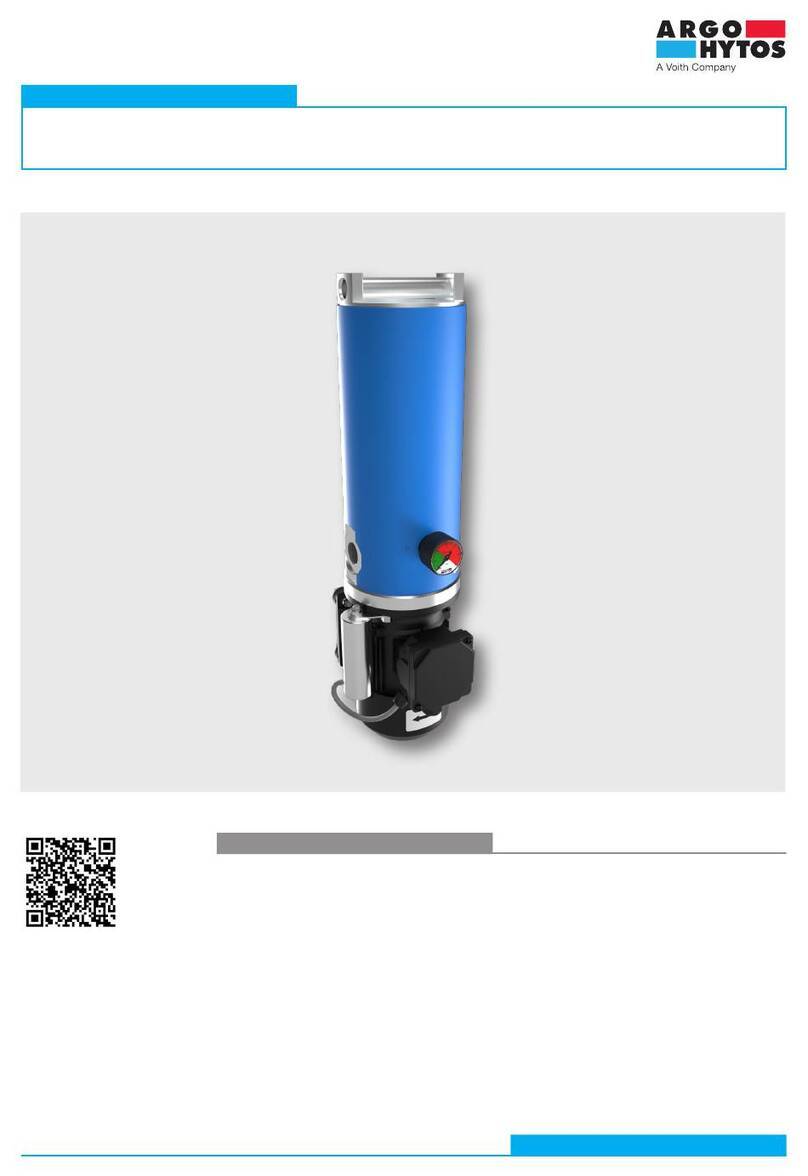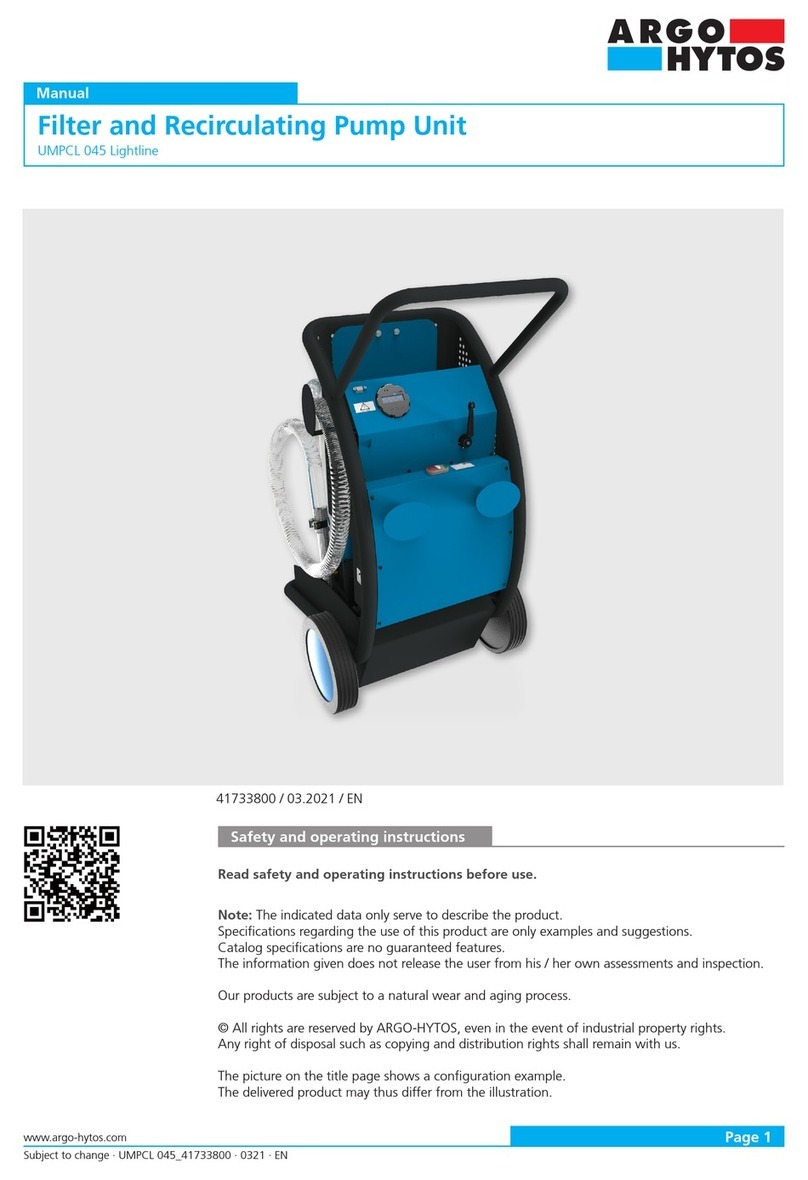
Subject to change · UMPC 045_31168300 · 0717 · EN
Page 2 www.argo-hytos.com
Content
Filter and Recirculating Pump Unit UMPC 045
Content.......................................................................................................................................................................... 2
1. About this documentation........................................................................................................................................... 4
1.1 Applicability of this documentation ................................................................................................................................. 4
1.2 Required and supplementary documentation .................................................................................................................. 4
1.3 Presentation of information ............................................................................................................................................ 4
1.3.1 Safety instructions .......................................................................................................................................................... 4
1.3.2 Symbols .......................................................................................................................................................................... 5
1.3.3 Terms ............................................................................................................................................................................. 5
1.3.4 Abbreviations .................................................................................................................................................................. 5
2. Safety instructions........................................................................................................................................................ 6
2.1 About this chapter .......................................................................................................................................................... 6
2.2 Intended use .................................................................................................................................................................. 6
2.3 Improper use .................................................................................................................................................................. 6
2.4 Reasonable foreseeable misuse ....................................................................................................................................... 6
2.5 Qualification of personnel ............................................................................................................................................... 6
2.6 General safety instructions .............................................................................................................................................. 7
2.7 Product and technology related safety instructions .......................................................................................................... 7
3. General instructions ..................................................................................................................................................... 8
4. Scope of delivery.......................................................................................................................................................... 9
5. About this product ..................................................................................................................................................... 10
5.1 Component overview ................................................................................................................................................... 10
5.2 Controls ....................................................................................................................................................................... 13
5.3 Identification of the product .......................................................................................................................................... 14
6. Transport and storage................................................................................................................................................ 15
6.1 Transport ...................................................................................................................................................................... 15
6.2 Storage ......................................................................................................................................................................... 15
7. Assembly..................................................................................................................................................................... 16
8. Commissioning ........................................................................................................................................................... 17
8.1 After switching on ........................................................................................................................................................ 17
8.2 In case of power failure ................................................................................................................................................ 17
8.3 Venting ......................................................................................................................................................................... 17
9. Service ......................................................................................................................................................................... 18
9.1 Switching on the device ................................................................................................................................................ 18
9.2. Data collection ............................................................................................................................................................. 20
9.3 Menu structure LubMon Visu ........................................................................................................................................ 21
10. Operation.................................................................................................................................................................... 22
10.1 Filtering of hydraulic fluids when refilling ...................................................................................................................... 23
10.2 Filtering of liquids in the bypass flow ............................................................................................................................ 24
10.3 Pumping of hydraulic fluids (e.g. waste oil, filter is bypassed) ........................................................................................ 25
10.4 Monitoring the oil cleanliness when filling machines and systems ................................................................................. 26
10.5 Monitoring the oil cleanliness when cleaning machines and systems in the bypass flow ................................................ 27
10.6 Monitoring modes ........................................................................................................................................................ 28
10.6.1 Continuous measurement without automatic shutdown (Mode 1) ................................................................................ 28
10.6.2 Measurement with cleanliness class specific shutdown (Mode 2).................................................................................... 28
